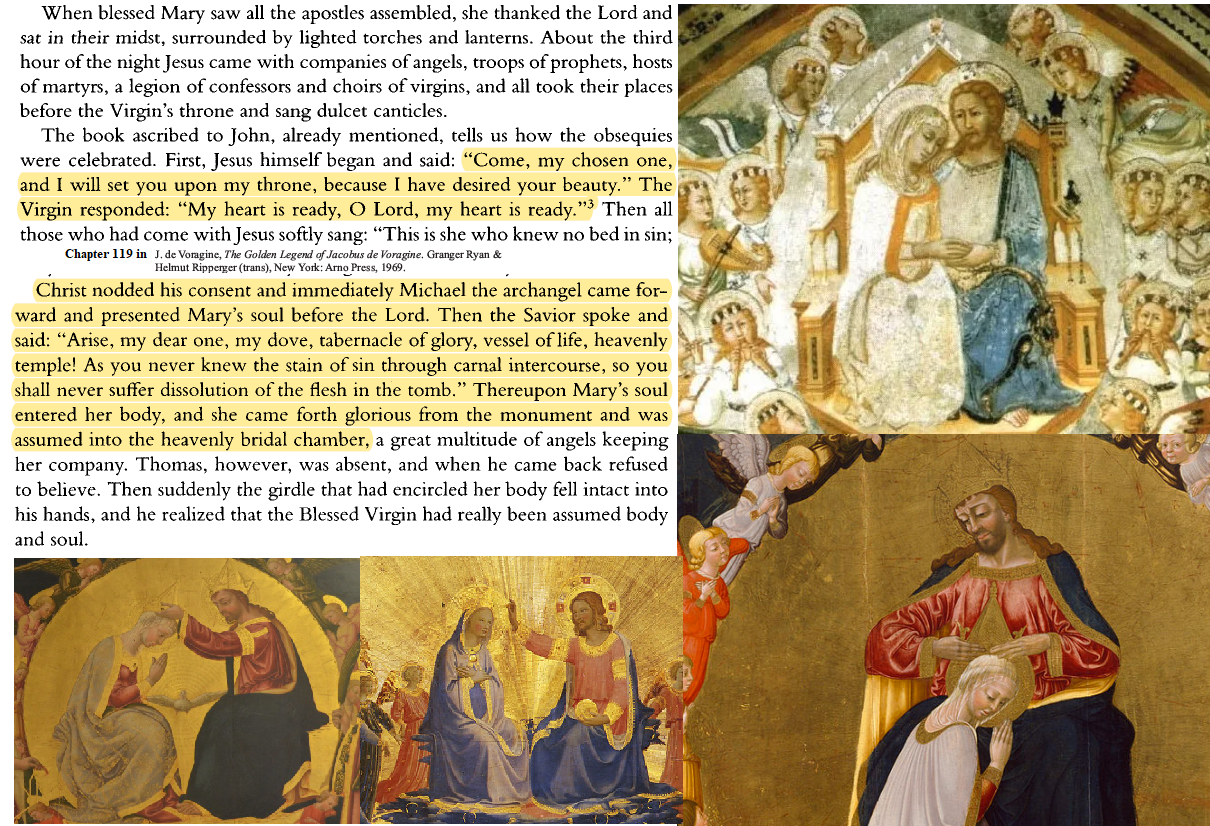The myth of the Virgin mother of God becoming the bride of her Son came up as an aside in Platonism and Christianity class this week. It is similar to other creation myths that also invoke the necessary reflexivity of monotheistic creationism. But this particular myth of the highest heavenly incest has such an exceptional beauty that it was often lovingly portrayed by medieval and Renaissance artists, and yet it is almost forgotten these days.

This Christian mother-wife myth is preserved in The Golden Legend as Ch 119, The Assumption of the Virgin. Find it in the Ryan translation from page 464 to 468.
Have a read of the story and notice how the Son’s summoning of his mother is presented as a seduction by a suitor: “I desire your beauty.” The mother’s assumption is straight into the son’s heavenly bridal chamber. But notice also in the art how the Virgin is presented as a girl of marriageable age. In this genre, the Christ is also of marriageable age. And he is the young ruler and creator of the universe often symbolised by his holding a globe. In this genre, the creator is not the older figure of the Father who is rarely seen in early and medieval Christian art.
Inconsistencies of this divine mother-wife story with the broader Christian story made it problematic for Protestant reformers and it may also be jarring for our post-Enlightenment modern ears. But notice how this myth’s exceptional form unfolds a reflexivity in the process of creation. The Virgin bore the creator and so her unmarked womb is the absence from which the creator arose. And then, in the marriage, the creator re-enters the absence from which he arose.
This myth presents the opposites of something-and-its-negation — formally, one(not-none) — in the sexual binary. The immaculate-mother is the feminine void prior to creation in which the world would be created. And then as the virgin-bride she is also the other-of-the-creator: the feminine suitor to the male Christ is the not-God void in which he creates. To put it more Platonically: first in the void comes the original-one as not-nothing; then we have one(not-none) out of which all else emanates. All that emanates, is — it can only be — a mixture of the sides of this primary distinction.
In this way, the necessary and sufficient requirements of the male creator for his creation are two: his original motherly-womb-void and his feminine-wife-other. But, as it turns out — as the myth tells us — these two are one and the same.